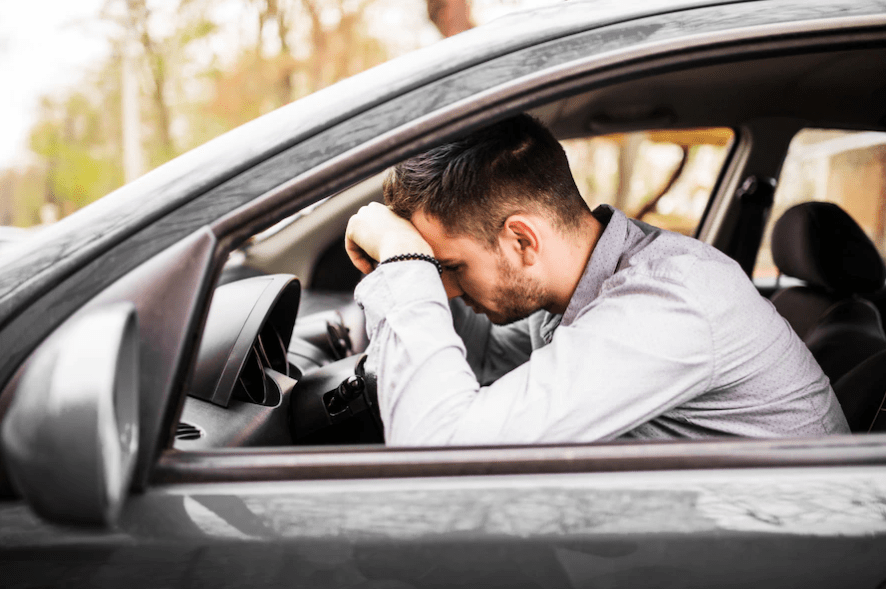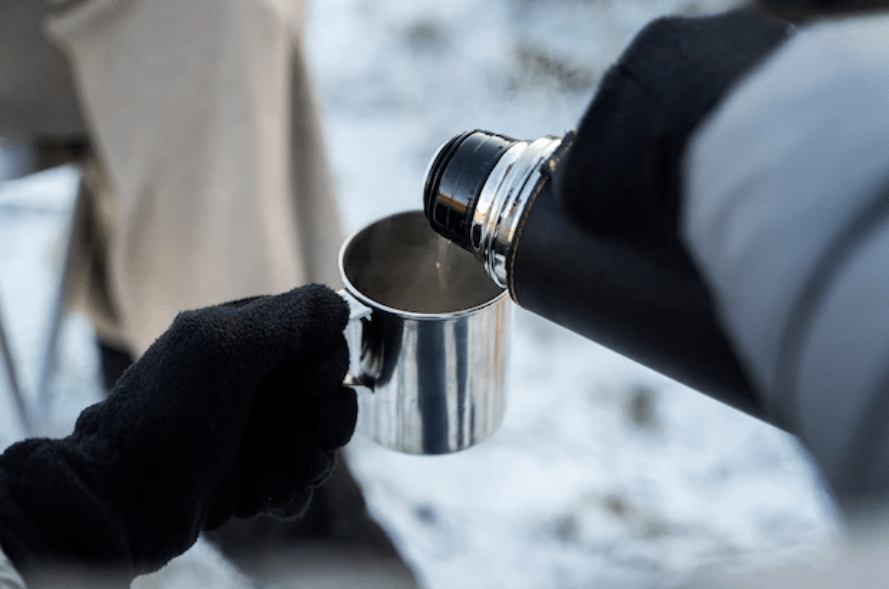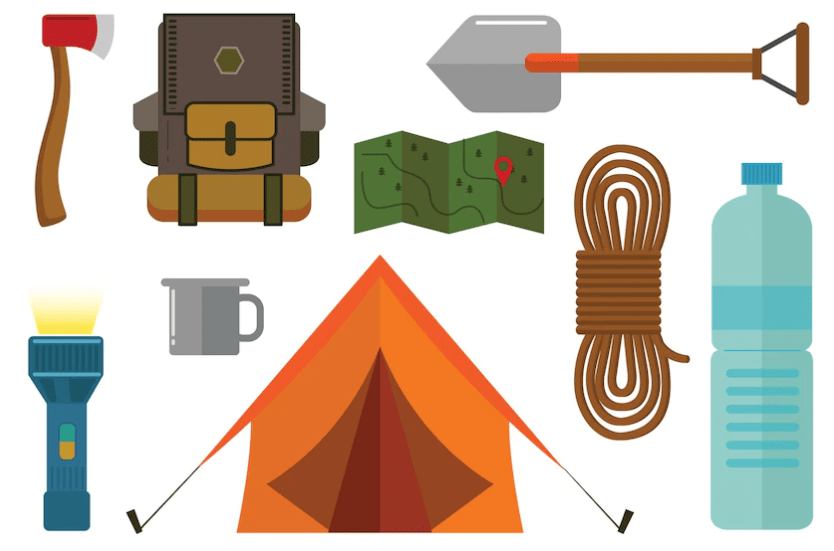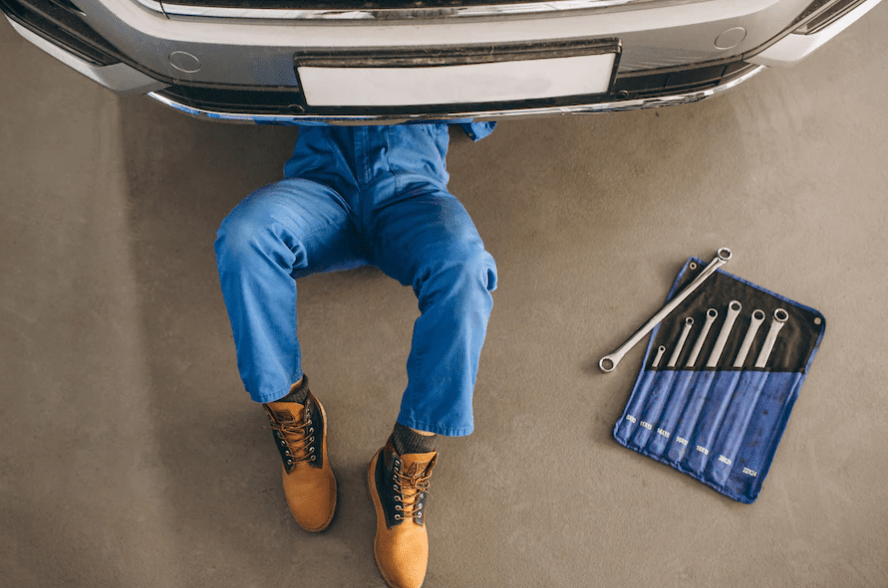Especially if you are traveling with a rooftop tent or the RV, you have to cover longer distances behind the wheel to reach the next destination. I would like to tell you about my experience and research here and give you a few important tips on how you can safely reach longer distances to your next destination.
Fatigue, back pain, lack of concentration: on long car journeys, drivers often reach their physical limits. In order for travelers to arrive safely and relaxed, they should consider many aspects before they start their journey.
This includes, for example, planning the route. Drivers are better off not relying on the navigation device’s predicted arrival time and calculating more time – especially for breaks. For longer car journeys, an additional overnight stay should also be taken into account in order to continue the journey rested. As a result, travelers do not get stressed – and they survive traffic jams with ease.
It is best for holidaymakers to put on something comfortable before setting off on their journey. The clothes should be made of airy, quick-drying material and let perspiration through. Otherwise, the fabric could stick to the body when it is wet and cold.
Possible consequences: muscle cramps and runny nose.
It is also important that drivers start the journey well-rested. Being overtired increases the risk of an accident. If you are traveling at a higher speed on the highway and close your eyes “just for a moment”, you cover an enormous distance blindly, which can quickly lead to accidents.
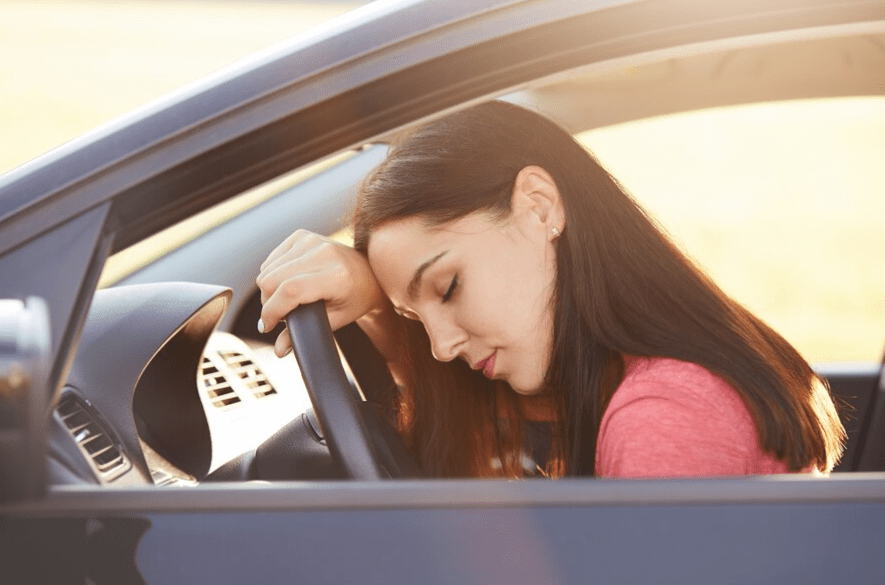
Table of Contents
The microsleep
In order to prevent microsleep at the wheel, drivers are best guided by their individual biorhythms. This determines when people are particularly productive – whether in the morning or rather in the evening.
Warnings for an impending microsleep
In order to avoid dozing off behind the wheel, it is important to pay attention to warning signs of the body, to take them seriously, and to react immediately. Fatigue often affects people in very different ways, so you know best when it’s time to take a break.
- Common signs of fatigue are heavy or burning eyelids, tunnel vision, or if the distance to the vehicle in front is unintentionally reduced again and again.
- A red alert is given if you startle while driving and/or can’t remember the last few seconds of the journey – in that case, you have probably already flown blind during a “microsleep”.
What can you do against a microsleep?
7 tips to prevent the emergency “microsleep”.
- The tips are preceded by the fact that these only serve to temporarily, i.e. for a limited period of time, overcome the fatigue that arises. If you still have a long journey ahead of you, there is only one way to prevent micro-sleeping, namely: get enough sleep.
- Keep changing your sitting position while driving – monotony is also tiring.
- Keep the temperature inside the car below 69.8°F (21°C), because heat also tires you out more quickly.
- If possible, the co-driver should not sleep but talk to the driver regularly – contact with the “outside” is a good way to check whether you are still sitting behind the wheel with all your senses.
- If tiredness increases, a power nap, for example at a rest stop, helps to feel more rested. Important: no longer than 20-30 minutes, otherwise the circulation “shuts down” and you get into deeper sleep stages.
- Avoid heavy food and alcohol before driving.
- Before a long night drive, you should definitely get enough sleep, if you believe the biorhythm, a night drive should start after 2 am. Especially important before driving at night: get your circulation going, gymnastic exercises can help.
This helps against tiredness when driving
Every driver should take signs of tiredness at the wheel seriously. Overtiredness is usually clearly noticeable: “The body sends out clear signals when it can no longer work efficiently,” says Seidenberger. “Heralds are, for example, reduced communication, poor mood, yawning, rubbing your eyes, staring, or restless sitting. Long-term ignoring of bodily signals can have an accident-promoting effect.” The traffic psychologist recommends a number of measures that we would like to list for you here.

- Getting a good night’s sleep: The fight against tiredness behind the wheel begins the night before you set off on your journey: If you know that a long journey is ahead, you should make sure that you really get enough sleep beforehand. This applies in particular to atypical departure times, such as those often chosen for holiday trips.
- Plan breaks: Ideally, when driving, you should take a short break every 130 miles or every two hours and use this, for example, for some exercise in the fresh air (or even a little nap in the parked car). For very long journeys, it can also make sense to plan a stopover with an overnight stay.
- Maintaining energy levels: During the journey, you should make sure to drink enough water and get light, vitamin-rich food. After a heavy meal, on the other hand, the risk of tiredness increases, which is why it is better to keep your hands off it.
- Taking responsibility for the passenger: Anyone who has a passenger has an advantage. Ideally, you can take turns with him and use the breaks to rest and recover. If the co-driver cannot (or does not want to) drive himself, he should at least make the driver aware of a lack of concentration.
- Street Food: Eat on the go: Nutrition is also important to maintain performance. For longer journeys, it is best for travelers to take provisions with them on board. Ideally, focus on light and durable food: salads, cooked vegetables, and wholemeal bread. This avoids a feeling of fullness. Avoid wheat products and meat as much as possible. Drivers should eat something before driving, but not start the journey on a full stomach. If you get hungry on the way, be sure to stop at a rest area and use a picnic table instead of eating at the wheel. If you don’t take care of yourself, you can stop at the many rest stops along the motorway. It is also important to drink about two liters of liquid per day – unsweetened juices and water are recommended.
- Breaks? Preferably every two hours: If drivers are on the road for a long time, they often lose concentration. On the other hand, fatigue increases. Drivers should not ignore the first signs, such as burning eyelids and frequent yawning. Then at the latest, it will be time for a break. It is best to head for a rest area every two hours. Take a 10 to 20-minute nap from time to time. Exercise also helps to reactivate the circulatory system.
- Extension and squat: As you inhale, raise your arms overhead. Stretch your body upwards. Bend your knees as you exhale. At the same time, swing your arms down. It is also very suitable if you take regular breaks and then simply go for a short walk.
Well-intentioned “home remedies” that do not help against tiredness or microsleep
Fresh air, cold water, and listening to the radio loud
- A frequently heard “tip”: roll down the windows while listening to the radio or splash cold water on your face while driving. Subjectively, this actually makes you feel more awake for a short time – but objectively, your body and mind are just as tired as before.
- The danger here is that the effect only lasts for a short time, and such measures also run the risk of underestimating the degree of sleepiness.

Coffee/energy drinks and dextrose
- “Stimulants” such as coffee, various energy drinks, or glucose are popular to keep you awake, especially on long-haul routes.
- And indeed: The ingredients caffeine and masses of sugar contained in it actually have a short-term stimulating/stimulating effect on the organism. However, the more rapid drop in performance when the effect diminishes should be urgently taken into account.
- Overall, such stimulants are not recommended and are reliable remedies against tiredness or microsleep.
Caffeine for tiredness while driving?
At first glance, the use of aids such as coffee, various energy drinks, or other caffeinated drinks seems to be a helpful way of maintaining the necessary concentration and alertness when driving. For many people, such drinks are therefore a regular companion on long car journeys – and not only then. However, they do not really help against fatigue and the associated increased risk of accidents.
Yes but…
The fact is: caffeine, for example, causes an increased output of adrenaline, which can be perceived as activating, sometimes even as “intoxicating” in the short term due to the increased blood pressure and pulse rate. Seen in this way, is the desired effect, in order to maintain full concentration when driving? You guessed it, a “but” follows.
The crux of the caffeine
Because this “kick” only lasts for a short time in the body: If the adrenaline produced in the body is used up, the drop in blood pressure, pulse rate, and general “energy level” is all the greater. The original hormonal balance can only be restored once the adrenaline has been recreated – and that can take some time. This interplay of hormones and the entire metabolism exhausts the body (and also the mind) and thus sometimes triggers greater tiredness than before.
Side effects of caffeine
“Accompanying symptoms” such as trembling hands or general “irritability” can also be the result for some people – not the ideal conditions for a safe car journey. Coffee or stimulating drinks are of little use, in the long run, they mask the actual tiredness and simulate good performance. The same goes for driving with the window open or turning up the music volume.
Does caffeine help, yes or no?
As so often, the same applies here: the dose makes the poison! Used as a stimulant, we don’t want to deny any of you coffee or a can of energy drink while driving. But: Unfortunately, you cannot magic away tiredness and lack of concentration.

